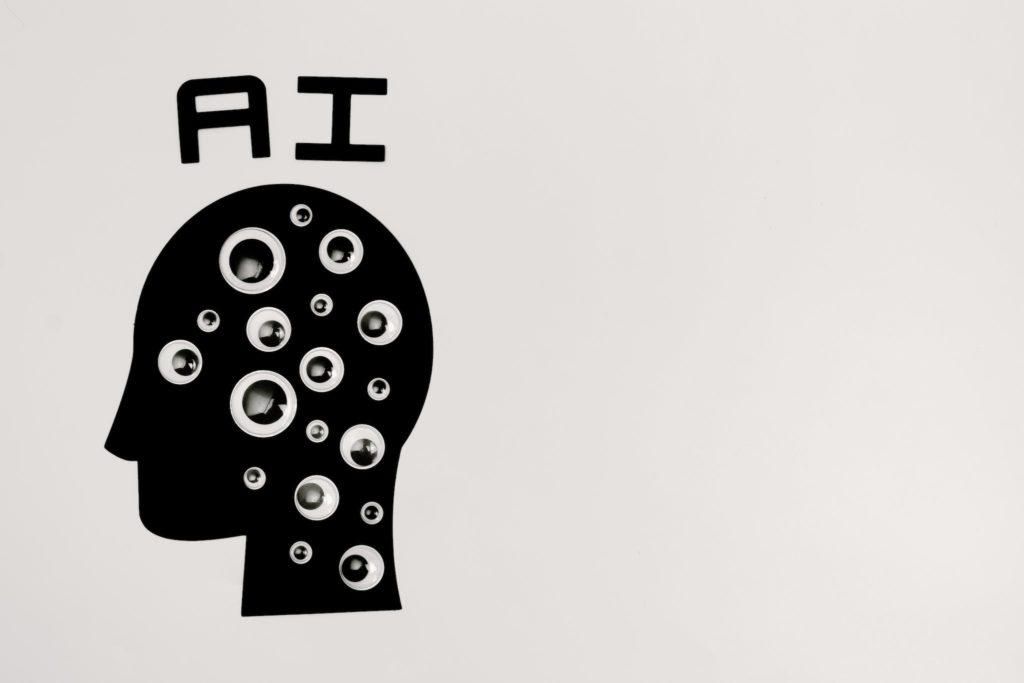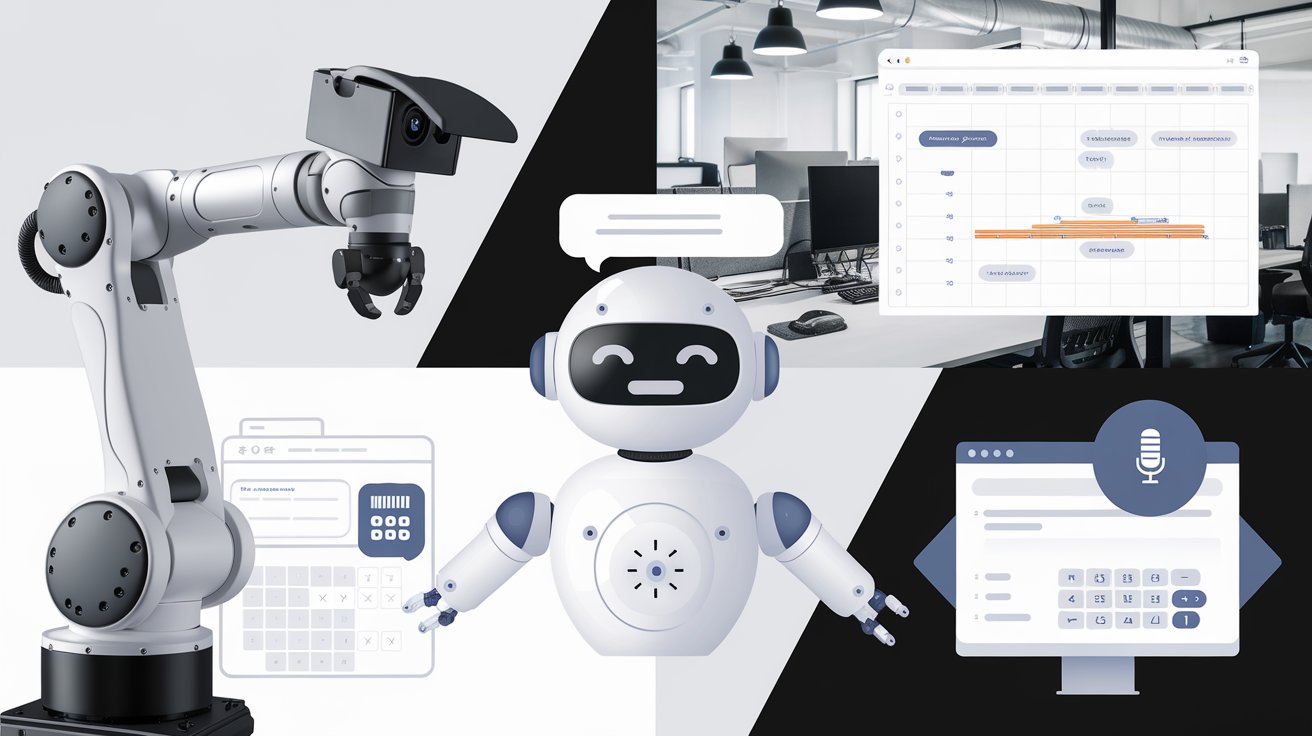In an era where efficiency is king, AI Automation Tools are revolutionizing the digital landscape. These ingenious solutions are reshaping how we approach work, unleashing potential in ways we could only imagine.
From boosting business productivity to transforming user experiences, AI automation is a game-changer. Join us as we explore its myriad benefits and real-world impacts, diving into a world where innovation meets practicality.
Table of Contents
- Key Takeaways
- The Rise of AI in Business and Productivity
- Key Benefits of Integrating AI Automation Tools
- The Impact of AI Automation on Businesses
- Cost Savings and Efficiency Gains
- Enhancing Customer Experiences Through AI
- Accelerating Service Delivery and Innovation
- AI Automation in Action: Use Cases and Applications
- Content Creation with AI: From Blog Posts to Code Explanations
- Customer Service Transformation with Chatbots
- Visual AI in Interface Validation
- Comparative Analysis of AI Automation Tools
- ChatGPT vs. Google’s Bard and HuggingChat
- The Unique Capabilities of Leading AI Tools
- The Organizations Pioneering AI Automation
- OpenAI’s Contributions to AI Productivity Tools
- Google’s Foray into AI with Bard and NotebookLM
- The Real-World Impact of AI Automation Tools
- AI’s Role in Digital Marketing and Sales Automation
- Educational Advancements with AI-Powered Tools
- Wrap Up
Key Takeaways
- AI automation tools offer significant benefits for businesses, including cost savings, efficiency gains, and improved customer experiences.
- AI automation tools have a wide range of applications, from content creation and customer service transformation to visual interface validation.
- ChatGPT is a leading AI automation tool, compared to Google’s Bard and HuggingChat, with its unique capabilities and versatility.
- Organizations like OpenAI and Google are at the forefront of developing AI automation tools and driving innovation in the field.
- AI automation tools have a real-world impact on various industries, such as digital marketing and sales automation, as well as advancements in education with AI-powered tools.

The Rise of AI in Business and Productivity
The infiltration of AI Automation Tools into business has been nothing short of transformative, creating a paradigm shift in operational efficiency. These tools harness machine learning and advanced algorithms to undertake tasks that traditionally required human intelligence, thereby elevating productivity to unprecedented levels.
By automating routine processes, AI liberates human talent for more complex and creative endeavors. It’s a shift that’s palpable across industries, from healthcare to finance, where AI-driven analytics and decision-making tools are becoming indispensable. This surge in AI utility is not just a trend but a cornerstone in the modern business strategy, as outlined by Gartner’s insights on AI-augmented software testing tools.
AI’s ascendancy in business productivity is reshaping the workforce, compelling a reevaluation of skills and roles. It’s a brave new world where AI’s potential is just beginning to be tapped.
Key Benefits of Integrating AI Automation Tools
The integration of AI Automation Tools into business operations ushers in a new era of efficiency and innovation. These tools offer the ability to automate complex tasks that would otherwise consume vast amounts of human time and resources. By doing so, businesses can reallocate their workforce to focus on strategic initiatives that foster growth and creativity.
AI automation’s capacity to sift through data with unparalleled speed and accuracy is a pivotal advantage. It not only accelerates decision-making processes but also enhances the quality of those decisions. For a deeper dive into how AI transforms productivity, Gartner’s insights offer a comprehensive look at AI-augmented software testing tools, revealing the profound impact on QA methodologies.
The Impact of AI Automation on Businesses

The advent of AI automation is revolutionizing the business world, driving profound changes that ripple across all sectors. These intelligent systems are capable of performing tasks with a level of speed and precision that is transforming the very fabric of how companies operate.
By implementing AI automation tools, businesses are witnessing a seismic shift in efficiency, with processes that once took hours now completed in a fraction of the time. This shift is not just about doing things faster; it’s about doing them smarter. AI’s ability to analyze vast datasets and extract insights leads to more informed decision-making, which is paramount in today’s data-driven economy.
Incorporating AI into their workflows, companies are reaping the benefits of cost savings and efficiency gains. These savings come from reducing the reliance on manual labor for repetitive tasks, allowing human employees to redirect their focus towards more strategic objectives. The impact is clear: a more agile business that can adapt quickly to market changes and customer needs.
Moreover, AI automation is enhancing customer experiences by providing personalized interactions at scale. As a result, businesses are not only operating more efficiently but also strengthening their customer relationships, which is vital for long-term success.
To understand the full scope of AI’s impact on business, consider how companies like OpenAI are leveraging tools such as ChatGPT to streamline operations and foster innovation. These advancements signal a new era where AI is no longer an optional luxury but a critical component for competitive advantage.

Cost Savings and Efficiency Gains
Embracing AI Automation Tools directly translates to significant cost savings and efficiency gains for businesses. By automating routine tasks, companies can drastically reduce the hours spent on manual labor, thereby cutting down on operational costs. The ripple effect of this automation is profound; it allows employees to reallocate their time towards more value-added activities, driving further innovation and productivity.
Moreover, the precision of AI in executing tasks minimizes human error, which often leads to additional costs and delays. This enhanced accuracy ensures that processes are completed correctly the first time, reducing the need for costly do-overs. For a deeper understanding of AI’s efficiency in practice, delve into Gartner’s insights on AI-augmented software testing tools, which highlight the transformative impact on quality assurance methodologies.
Enhancing Customer Experiences Through AI
AI Automation Tools are pivotal in crafting personalized customer experiences, a critical differentiator in today’s competitive markets. They analyze customer data, detect patterns, and anticipate needs, enabling businesses to tailor interactions and offer timely solutions. This level of personalization was once a Herculean task, but AI makes it seamless, fostering loyalty and satisfaction.
By utilizing AI, companies can provide 24/7 customer service without sacrificing quality. Chatbots and virtual assistants, powered by AI, engage customers with instant, accurate responses, transforming customer service into a round-the-clock operation. The integration of these tools has been a game-changer, as noted by Zapier’s insights on productivity-enhancing AI. They ensure that every customer feels heard and valued, any time of day.
Accelerating Service Delivery and Innovation
In the fast-paced world of business, AI Automation Tools are the linchpin for accelerating service delivery and fostering innovation. These tools streamline workflows, slashing the time it takes to bring services to market. As a result, businesses can respond swiftly to changing market demands and customer expectations.
Moreover, AI-driven insights spur innovation by identifying trends and gaps in the market. This proactive approach to service delivery is not just about speed; it’s about staying ahead of the curve.
For a glimpse into how AI is revolutionizing service delivery, take a look at Zapier’s compilation of the best AI productivity tools. These innovations are reshaping industries, driving them towards a future where adaptability and foresight are key to thriving in an ever-evolving digital landscape.

AI Automation in Action: Use Cases and Applications
AI automation is transforming industries by taking over tasks that are repetitious or too complex for humans to handle efficiently. For instance, content creation has seen a seismic shift with AI’s entrance, where tools like ChatGPT assist in generating blog posts and even explaining intricate code. This revolutionizes how content is produced, saving time and allowing for greater scale.
Visual AI is another area making waves, particularly in interface validation. This technology can scrutinize every element of a user interface, identifying discrepancies without exhaustive manual oversight. It’s a game-changer for ensuring digital products meet the highest quality standards before reaching the end user.
Content Creation with AI: From Blog Posts to Code Explanations
AI has revolutionized content creation, offering tools that can craft blog posts, social media updates, and even detailed code explanations. This leap forward means content can be generated quickly, with a level of sophistication that mimics human writers.
For example, ChatGPT, an AI by OpenAI, can analyze a prompt and produce comprehensive and coherent text. It can also translate complex code into layperson’s terms, making technology more accessible.
But the real game-changer is AI’s ability to produce vast quantities of content, consistently and without fatigue. This scalability is a boon for content-heavy sectors, allowing them to keep up with the relentless pace of digital consumption.
Customer Service Transformation with Chatbots
Chatbots have revolutionized customer service, empowering businesses to offer instant support and significantly improve response times. By leveraging these AI-driven assistants, companies can manage a high volume of inquiries without compromising on quality.
Embedded with natural language processing, chatbots understand and react to customer needs, providing a personalized experience. They are capable of learning from interactions to enhance future responses, a feature that has made them indispensable in modern customer service strategies.
For a deeper understanding of how AI chatbots are transforming the service industry, explore insights from Zapier’s report on the best AI productivity tools. These innovations are not just changing the game; they’re redefining it.
Visual AI in Interface Validation
Visual AI is transforming interface validation, ensuring that digital products not only function correctly but also deliver a flawless user experience. By simulating human vision, Visual AI scrutinizes every element on a screen, detecting anomalies that might escape even the most meticulous manual testers.
This technology excels in identifying visual defects such as misalignments, incorrect fonts, or color deviations, which are crucial for maintaining a professional and consistent interface.
What sets Visual AI apart is its ability to learn and adapt to changes in the application’s UI without the need for constant manual updates. This self-improving nature makes Visual AI an invaluable asset in automated testing, where it can continuously validate interfaces with minimal human intervention. By ensuring that every pixel is in place, Visual AI guarantees that the first impression of a digital product is always a cut above the rest.
Comparative Analysis of AI Automation Tools
When dissecting the landscape of AI Automation Tools, a standout comparison involves ChatGPT and Google’s Bard, both of which are reshaping the AI-driven productivity space. ChatGPT, with its robust language processing capabilities, has become a benchmark in the industry, widely acclaimed for its versatility in tasks ranging from content creation to coding assistance. On the other hand, Google’s Bard seeks to leverage the vast information database of the search engine giant, potentially offering a broader context for user queries.
What truly differentiates these tools are their underlying models and intended applications. While ChatGPT is celebrated for its conversational prowess, Bard is poised to integrate deeper web knowledge, potentially transforming how we obtain information. For insights into the current state of AI productivity tools, Zapier’s report provides a comprehensive analysis of these groundbreaking technologies.

ChatGPT vs. Google’s Bard and HuggingChat
In the arena of AI Automation Tools, the rivalry between ChatGPT, Google’s Bard, and HuggingChat is particularly fascinating. ChatGPT, developed by OpenAI, has carved a niche for itself with its advanced natural language processing abilities. This tool has become synonymous with generating human-like text, making it a favorite for tasks like content creation and customer interaction.
On the flip side, Google’s Bard aims to leverage the search giant’s massive data trove, providing users with context-rich information. It’s a promising venture that could redefine how people access and use web knowledge. Meanwhile, HuggingChat, although less renowned, offers developers an open-source alternative, enabling customization and flexibility in AI conversations.
To gain a clearer understanding, Zapier’s insights into these AI productivity tools offer a detailed comparison, shedding light on each tool’s unique capabilities and potential applications.
The Unique Capabilities of Leading AI Tools
Leading AI tools boast a range of singular capabilities that set them apart in the digital domain. ChatGPT, for instance, excels in generating text that closely mirrors human writing, making it invaluable for content creation and customer service applications. Its ability to understand context and produce relevant responses has made it a go-to tool for those looking to automate complex conversational tasks.
On the other hand, Google’s Bard leverages the search engine’s vast repository of information, offering users answers that are not just accurate but also contextually rich. This depth of knowledge integration is a game-changer for information retrieval and user interaction online. For those curious about the cutting-edge advancements in AI tools, Zapier’s exploration offers a window into their transformative potential.
The Organizations Pioneering AI Automation
In the vanguard of AI automation, OpenAI stands as a beacon, its ChatGPT tool redefining how businesses engage with language-based tasks. This innovation is not merely an advancement; it’s a revolution in conversational AI, impacting sectors from education to customer service. Equally transformative, Google’s AI venture with Bard extends the tech giant’s prowess into the realm of contextual information, potentially setting a new benchmark in search and data interpretation.
Together, these organizations are not just participants but trailblazers in the AI automation landscape, their tools integral to the evolving narrative of digital productivity. Their contributions are pivotal, shaping an era where AI’s role in automation is both foundational and expansive, promising a future where efficiency and innovation are inextricably linked.
OpenAI’s Contributions to AI Productivity Tools
OpenAI has emerged as a pivotal player in the realm of AI productivity tools, most notably with their creation of ChatGPT. This advanced language model has revolutionized how we interact with machines, providing nuanced and contextually aware responses that rival human conversation. By integrating ChatGPT into various applications, OpenAI has enabled businesses to streamline communication, automate content creation, and enhance customer service experiences.
The impact of OpenAI extends beyond mere efficiency; it’s about redefining the possibilities of human-AI collaboration. Their commitment to pushing the boundaries of AI utility has led to groundbreaking innovations, proving essential in today’s fast-paced digital economy. With OpenAI at the forefront, AI productivity tools are not just tools; they’re transformative forces reshaping our digital interactions.
Google’s Foray into AI with Bard and NotebookLM
Google’s venture into AI with Bard signifies a bold step into the future of information processing and dissemination. Bard seeks to harness the breadth of the internet to deliver nuanced and context-rich knowledge, setting a new standard in user experience. This AI-driven initiative is poised to transform how we interact with the web, offering insights that are both profound and relevant.
By integrating NotebookLM into their suite of AI tools, Google further cements its position as an innovator. NotebookLM is designed to understand and generate human-like text, promising a leap forward in natural language processing and machine learning capabilities. Together, Bard and NotebookLM illustrate Google’s commitment to advancing AI, with the potential to reshape the digital landscape.

The Real-World Impact of AI Automation Tools
AI automation tools have reshaped the business landscape, influencing every aspect from operational efficiency to customer engagement. They have enabled a shift towards data-driven decision-making, providing insights that were once beyond human analytical capabilities.
The real-world impact is evident as companies harness AI to personalize marketing, streamline workflows, and innovate at breakneck speeds. These tools have become the backbone of modern enterprises, crucial for sustaining competitive advantage in a digital-first economy.
By integrating AI, businesses are not just automating processes; they’re reimagining the future of work. For a closer look into the transformative effects of AI in business, click here.
AI’s Role in Digital Marketing and Sales Automation
In the realm of digital marketing and sales, AI automation tools have become indispensable assets for crafting highly targeted campaigns and streamlining customer journeys. These intelligent systems analyze vast amounts of data to predict consumer behavior and personalize interactions, resulting in enhanced engagement and conversion rates.
By automating repetitive tasks such as lead scoring and email marketing, AI empowers marketers to focus on strategic planning and creative content generation. The result is a more dynamic marketing approach that adapts in real-time, delivering messages that resonate with the audience. For an insight into the transformative power of AI in this field, Digital Marketing Institute offers a closer look at the latest tools redefining the landscape.
Educational Advancements with AI-Powered Tools
AI-powered tools are reimagining education, creating personalized learning experiences that adapt to individual student needs. These tools can analyze learning patterns, identify knowledge gaps, and tailor content accordingly, promoting a more effective learning process.
Students now have access to AI tutors that offer real-time assistance and feedback, making education more interactive and engaging. Moreover, AI-powered dissertation writing services and homework helpers are enabling students to enhance their academic writing and research skills.
For a deeper understanding of the transformative impact of AI in education, explore this detailed analysis. The integration of AI in educational settings is not just an enhancement; it’s a revolution, fostering an environment where personalized learning is the norm, not the exception.

Wrap Up
In the digital epoch, AI Automation Tools have become the linchpin of business innovation, driving efficiency and reshaping customer experiences. From ChatGPT’s conversational mastery to Google’s Bard and its deep well of knowledge, AI is a transformative force. It’s not just about automation; it’s about setting a new paradigm for productivity and creativity.
Embrace the future—leverage AI to redefine your digital strategy. Dive in, the potential is limitless.


